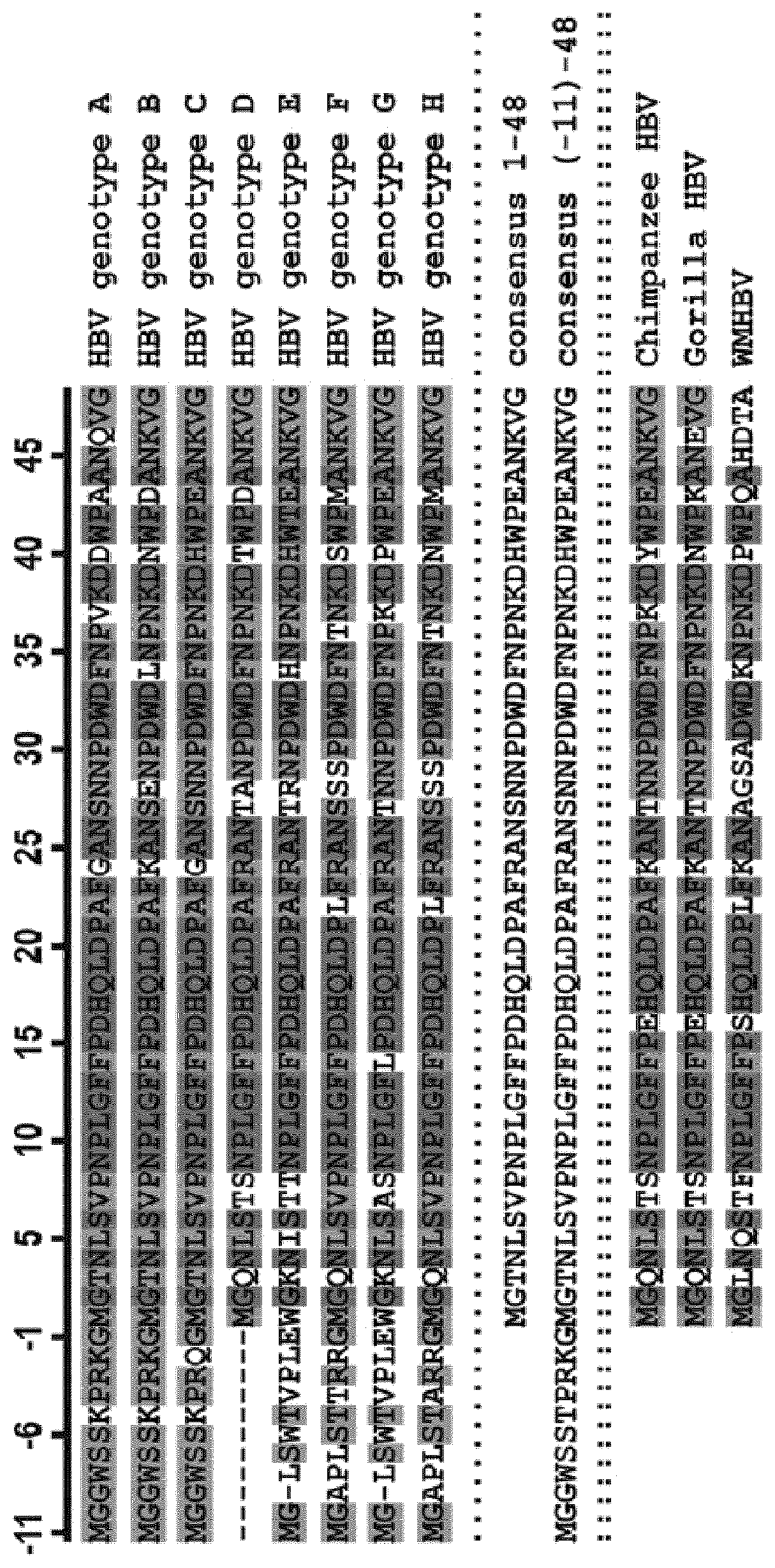Combination therapy of hbv and hdv infection
a technology applied in the field of combination therapy of hbv and hdv infection, compositions for the treatment of infections, can solve the problems of rapid decrease of plasma viral dna, very limited treatment options for hdv co-infected patients, and potentially life-threatening liver infection hepatitis b, etc., to achieve the effect of reducing or losing hdv rna
- Summary
- Abstract
- Description
- Claims
- Application Information
AI Technical Summary
Problems solved by technology
Method used
Image
Examples
example 1
linical Trial on Mycludex B in Chronic HBV Infection
Objective:
[0153]The objective of the clinical trial is the evaluation of safety and tolerability, as well as antiviral efficacy of Myrcludex B in HBsAg-positive patients with active hepatitis.
Methodology:
[0154]Cohort A: 40 chronically HBV infected, HBeAg negative patients (all HBV DNA>2000 IU / ml median HBV DNA 4.7 log10 IU / ml; no cirrhosis) were treated for 12 weeks with once daily sc 0.5 mg, 1 mg, 2 mg, 5 mg or 10 mg Myrcludex B for 12 weeks (8 patients per dose). Treatment was extended to 24 weeks in patients receiving 10 mg.
Results:
[0155]Myrcludex B was very well tolerated, injection side dermatitis occurred in 3 patients receiving 10 mg of Myrcludex B, regressed on treatment. Over 1 log10 HBV DNA decline at week 12 was observed in 6 / 8 (75%) patients receiving 10 mg Myrcludex B while this occurred less often in the remaining dose groups (7 / 40; 17%). Alanine transaminase (ALT) normalized in 22 / 40 (55%) patients and median ALT val...
example 2
Study of a Combination of Myrcludex B and Entecavir in HBV / HDV Infected Cells
[0157]A nucleoside analogue entecavir did not improve the inhibition of HBV receptor by Myrcludex B in vitro (measured by immunochemistry evaluation of number of HepaRG cells infected with HBV / HDV containing serum):
TABLE 1Number of HBcAg-positive cells on day 6 post infectionas determined by HBcAg-specific IF after infection ofHepaRG cells with an HDV-positive serum (serum 1) usingincreasing concentrations of Myrcludex B in the absenceof entecavir and in the presence of 20 μM entecavir.Myrcludex BNo entecavir20 μM entecavirconcentrationMean value (%Mean value (%(nM)uncomp. infection)uncomp. infection)01001000.02544.736.70.62516.528.1100.20.210000.2
[0158]Similar results are expected for a combination of Myrcludex B with any nucleoside and nucleotide analogue because they all essentially have the same mechanism of action, i.e., inhibition of HBV polymerase.
example 3
Study of a Combination of Myrcludex B and IFNa in HBV Infected Cells
[0159]Cell cultures: primary human hepatocytes (PHH), HBV-susceptible cell line HepaRG, cell lines transfected or transduced with HBV receptor NTCP.
[0160]Cell cultures will be infected with HBV. Addition of different concentrations of Myrcludex and interferon will be investigated in order to “cure” the cell culture from infection.
PUM
| Property | Measurement | Unit |
|---|---|---|
| time | aaaaa | aaaaa |
| width | aaaaa | aaaaa |
| hydrophobic | aaaaa | aaaaa |
Abstract
Description
Claims
Application Information
 Login to View More
Login to View More - R&D
- Intellectual Property
- Life Sciences
- Materials
- Tech Scout
- Unparalleled Data Quality
- Higher Quality Content
- 60% Fewer Hallucinations
Browse by: Latest US Patents, China's latest patents, Technical Efficacy Thesaurus, Application Domain, Technology Topic, Popular Technical Reports.
© 2025 PatSnap. All rights reserved.Legal|Privacy policy|Modern Slavery Act Transparency Statement|Sitemap|About US| Contact US: help@patsnap.com

